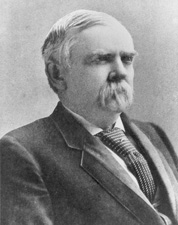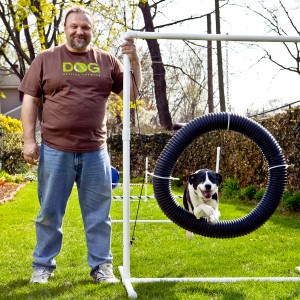
David Payer, DVM, PhD is the Supervisory Ecologist at Arctic National Wildlife Refuge. On the occasion of the Refuge’s fiftieth anniversary, David was gracious enough to take some time to talk with Vet Planet about ANWR and some of the amazing animals that call it home.
VP: How did you come to work at the refuge and can you share a little of your day-to-day routine and responsibilities with our readers?
I was working in a private, mixed-animal practice in rural Massachusetts in 1988 when the opportunity arose to spend a summer hiking and canoeing in Alaska. I was at a decision point in my career: stay and become a partner, or seek new horizons. I chose the latter, intending to re-enter private practice after several months of travelling. Well, it didn’t work out that way. My summer in Alaska had me hooked and ready for more wilderness adventures. The following year the tanker Exxon Valdez ran aground and spilled 11 million gallons of oil off the coast of Alaska and I went to work for the National Park Service. My job was to assess damages to coastal wildlife and their habitats in remote, seldom-visited areas of southwest Alaska. During that time I resolved to refocus my career on wildlife conservation. I returned to school in the “lower 48” and earned a Master of Science degree in Wildlife Science, then a Ph.D. in Wildlife Ecology. Along the way, I studied bighorn sheep in Oregon, forest carnivores in Maine, and raptors in northern Alaska. I also married a wildlife toxicologist, and we moved back to Alaska for good in 1998. We were fortunate to both find challenging and rewarding positions with the U.S. Fish and Wildlife Service in Fairbanks.
My title at the Arctic Refuge is “Supervisory Ecologist”. I am the Refuge’s lead ecologist, tasked with designing and implementing inventory, monitoring, and research studies of fish, wildlife, plants and their habitats. I supervise a talented staff of specialists in mammalogy, ornithology, botany, aquatic ecology, Geographic Information Systems, and data management. I also coordinate with researchers from other state and federal agencies, academic institutions, and non-governmental organizations to facilitate studies that support conservation of the refuge and expand our knowledge of Arctic ecosystems.
My day-to-day routine varies from mundane to high adventure. Much of my time is spent coordinating research with others, supervising employees, writing proposals, papers, and reports, and attending meetings. Summer is the busiest time for field work. I spend 6 to 8 weeks on the refuge each summer conducting wildlife studies. Much of that work is expeditionary in nature; everything needs to be carefully planned in advance, because we are typically dropped off by small aircraft in remote areas for several days to weeks at a time. Some projects, such as long-term monitoring of breeding bird populations and vegetation, are based at stationary field camps and involve professional staff and crews of seasonal employees. Others, such as inventorying raptor-nest locations or monitoring lamb production of Dall’s sheep, are small-group efforts in which 2-3 biologists traverse an area by canoe or on foot and camp along the way. We also work with the Alaska Department of Fish and Game to collect biological samples for health and disease screening and to deploy radio collars on large mammals to track their movements. This often involves helicopter-assisted capture operations. Finally, a number of projects are of the aerial-survey type, in which we fly transects to estimate population trends for larger wildlife such as caribou, muskoxen or swans.
VP: I think for many people the word ‘arctic’ in the Refuge’s name often conjures an image of unending, frozen white expanses. But the Refuge is actually home to several distinct ecological regions. Could you speak a bit to some of that diversity?
The Arctic Refuge is a vast and diverse landscape. At 19.3-million acres, it’s about the same size as Vermont, New Hampshire, and Massachusetts combined. There are several ecosystem types within its borders, each with its own distinctive combination of geology, landforms, vegetation and wildlife. Travelling north from the Refuge’s southern border about 50 miles north of the Arctic Circle, one first encounters boreal forest, a hilly region of dense spruce, birch and aspen forests dotted with ponds and wetlands. Continuing north, the trees thin out and are gradually replaced by more open tundra dominated by shrubs and sedges. Next are the magnificent mountains of the Brooks Range, which is the northernmost extent of the Rocky Mountains and part of the Continental Divide. The Brooks Range runs from east to west across the refuge, and is up to 80 miles wide. Rocky limestone and granite peaks surround deep valleys with numerous rivers that flow into the Yukon River on the south side of the divide and to the Arctic Ocean on the north. North of the Brooks Range, hills give way to the rolling coastal plain, a 10 to 40 mile-wide strip of tundra that supports countless breeding birds and is the calving ground for the Porcupine Caribou Herd. The coastal plain ends at the coast of the Beaufort Sea (Arctic Ocean), but the Refuge extends offshore to include barrier islands and protected lagoons that provide vital habitat for birds, fish, and marine mammals including polar bears.
VP: ANWR is teeming with wildlife. The Refuge’s website states that it is home to ’42 fish species, 37 land mammals, eight marine mammals, and more than 200 migratory and resident bird species.’ Are there any species in the Refuge that you encounter that particularly inspire or captivate you?
I am constantly inspired by the diversity of wildlife in the Refuge and the ingenious ways they have evolved to survive and thrive in such an extreme environment. Migratory birds arrive in droves in the early summer, mate, raise young, and depart just a few months later, some following migration routes that involve non-stop flights of thousands of miles to their wintering grounds in the southern hemisphere. Not only that, but in many cases the newborn young depart after the adults have already left and make the trip unguided when they are only weeks old! Some of these birds return the next year to nest at the exact same spot they used the year before.
Other species migrate shorter distances, such as caribou of the Porcupine Herd that travel 800 miles round trip between their calving grounds on the Arctic coastal plain and wintering areas in the boreal forest region of the Refuge and adjacent Yukon Territory, Canada. Although a shorter trip than that untaken by most migratory birds, it is one of the longest migrations of any land mammal in the world, and involves crossing high, rugged mountains and several major rivers. Further, caribou rarely travel in a straight line for very long. Individual caribou have been estimated to wander over 3,000 miles a year!
Still other species are year-round residents in some of the most unforgiving environments in the world. For example, Muskoxen reside on the Refuge’s coastal plain throughout the year. They survive the long, brutal Arctic winter by reducing their energy output and eating bits of dried, frozen vegetation in windswept areas. For insulation they rely on a dense coat of quivut, a specialized wool that is 8 times warmer than sheep’s wool.
Finally, some species such as the Arctic ground squirrel and grizzly bear hibernate during winter. During this long period of sleep and reduced metabolic rate, pregnant female bears give birth to altricial cubs and produce milk for months, despite not having had anything to eat or drink since the previous fall!
You can read more about Refuge wildlife and habitats at: http://arctic.fws.gov/
VP: For better or worse, the Refuge often enters the public’s consciousness in the context of the debate over oil-drilling. The area of the Refuge that is potentially available to oil drilling is known as the 1002 area. What would be some of the potential impacts on wildlife if drilling were to occur there?
First a bit of background: the Arctic Wildlife Range was established by executive order during the Eisenhower Administration on December 6, 1960, for the purpose of “preserving unique wildlife, wilderness and recreation values”. Subsequent legislation known as the Alaska National Interest Lands Conservation Act (ANILCA), which was signed by President Carter in 1980, doubled the size of the Refuge and added additional purposes, including: (1) conservation of fish, wildlife, and their habitats in their natural diversity; (2) fulfillment of international treaty obligations with respect to fish, wildlife and their habitats; (3) provision of opportunities for continued subsistence uses by local residents; and (4) protection of water quality and quantity. ANILCA also added most of the original Range to the National Wilderness Preservation System, with the exception of a 1.5-million acre area on the Refuge’s coastal plain. This area became known as the 1002 Area after Section 1002 of ANILCA, which called for inventory of fish and wildlife resources and assessment of potential impacts of oil exploration and development on those resources. Section 1002 also authorized seismic testing to map potential oil reserves during 1984-85.
A 1987 report to Congress described the results of the inventory and assessment. The report concluded that negative effects of development on wildlife would range from negligible to major, with the Porcupine Caribou herd and muskoxen most vulnerable. The assessment also noted that the wilderness value of the coastal plain would be eliminated, traditional subsistence lifestyles would be irretrievable lost or altered, and there would be a major reduction in the value of the area as a pristine, natural scientific laboratory. Since that time, several bills have been introduced in Congress to open the area to oil and gas leasing or protect it as Wilderness, but none have been enacted and future management of the area remains uncertain.
VP: Finally, ANWR is celebrating its 50th anniversary. Part of the original inspiration for its creation was the idea of preserving a piece of the American frontier, even for the many Americans who would never be able to visit it. Why do you think that idea of untouched wilderness, of an uncivilized frontier, continues to capture the American imagination?
[I asked my colleague, Dr. Roger Kaye, to respond to this question. Roger is a pilot, wilderness scholar, and author of the book Last Great Wilderness: The Campaign to Establish the Arctic National Wildlife Refuge]
It’s an interesting question—really about how we see ourselves in relation to nature and wilderness, and why we value it. In part, Americans’ affinity for Wilderness is cultural and learned. Wilderness is where the distinct American identity, our national character was forged. It is what set us apart from Europe. The folklore of Daniel Boone, Lewis & Clark, the sense of horizons unexplored and a Great Beyond have always been part of the American mind and our literary tradition.
But the allure of Wilderness and the frontier has roots beyond American cultural heritage. It also draws upon the power of other themes deeply ingrained in the human psyche, themes that are older and deeper than culture, and perhaps, older than conscious thought itself. Wilderness holds memory of our origin as creatures of the wild, of how our ancient ancestors experienced and responded to the natural world. The protection of Wilderness reflects the current needs of our increasingly urban, regimented, commodity-driven culture and its appealing to many people because it reveals some archetypal part of us that this culture has obscured, though not erased. Wilderness as a place captures our imagination because it’s a remnant of our world that is still natural, wild, and free. Wilderness as an idea is inspiring because it speaks to that remnant of that part of us that still seeks connection, belonging, and rootedness within that world.


































































